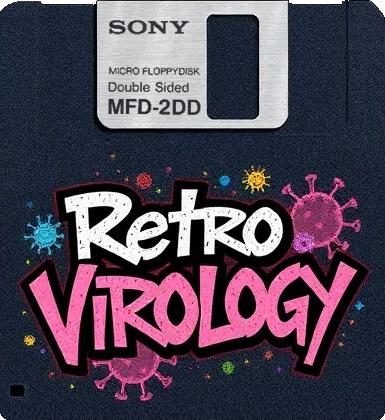Technical Overview of Key Virus Mechanism
Key viruses represented a sophisticated class of Atari ST malware that used a unique infection and activation strategy.
Unlike traditional viruses, these malicious programs would:
- Replicate themselves silently
- Remain dormant until a specific "key" was detected
- Execute specialized routines when the key was present
Notable Key Viruses and Their Characteristics
Signum/BPL Virus A
- Discovery Date: November 22nd 1987 by Klaus Seligmann.
- Infection Scope: Estimated 1.5 million copies worldwide
- Key Mechanism:
- Waits for a specific disk with a unique code
- Executes hidden routine when key is found
- System Vector: Attaches to
Hdv_bpbvector - Replication: Copies to current drive (A or B)
- Key: if bootsector[2:4] == $1092 and bootsector[4:6] > signum[0:2],
jsris called on the detected keyed disk (so needs to be a valid branch)
Bad Taste Virus
- Discovery Date: April 4th 1989 by Pulsion.
This virus was spread using a program called The Infector - The virus Diffusion Set 1.0. - Author: Trap #16 / Bad Tast
- Reset Resistance: Survives system reset
- Infection Strategy:
- Checks every inserted disk (using
Hdv_bpbvector) - Executes external routine if special key is found on the inserted disk bootsector.
- Payload Variation: Depends on specific key disk
- Keyed Disk Variations:
- Keydisk #1: Inverts screen
- Keydisk #2: Changes 16 colors each VBL (Vertical Blank Interrupt)
- Keydisk #3: Formats FAT and directory
- Key: if bootsector[30:32] == $4344,
jsris called on the detected keyed disk to an relative address set in the bootsector
Technical Infection Mechanism
Key viruses typically employed the following techniques:
- Silent Replication: Copy to other disks without immediate payload
- Key Detection: Scan inserted disks for specific markers
- Conditional Execution: Trigger specialized routines based on key presence
Infection Detection and Prevention
Antivirus tools like the Ultimate Virus Killer (UVK) 2000 could detect these viruses by:
- Monitoring system vector modifications
- Checking specific memory offsets
- Verifying bootsector integrity
But as far as I know, no antivirus was checking specific keys based on known locations find malicious content. As as of today, the key bootsector for the Signum BPL virus was never found despite millions of copies of the virus.
For each key virus, a vaccine exists which contains the lookup key and a virus destruction routine which is triggered by the virus itself.
Technical Significance
These key viruses demonstrated:
- Advanced conditional execution techniques
- Sophisticated memory residence strategies
- Exploiting operating system design vulnerabilities (vectors)
Conclusion
Key viruses on the Atari ST represented a fascinating chapter in early computer malware, showcasing how viruses could be designed with complex, conditional activation mechanisms. The ability to remain dormant and execute specific routines based on unique "key" disks highlighted the creativity and technical sophistication of early virus writers.

